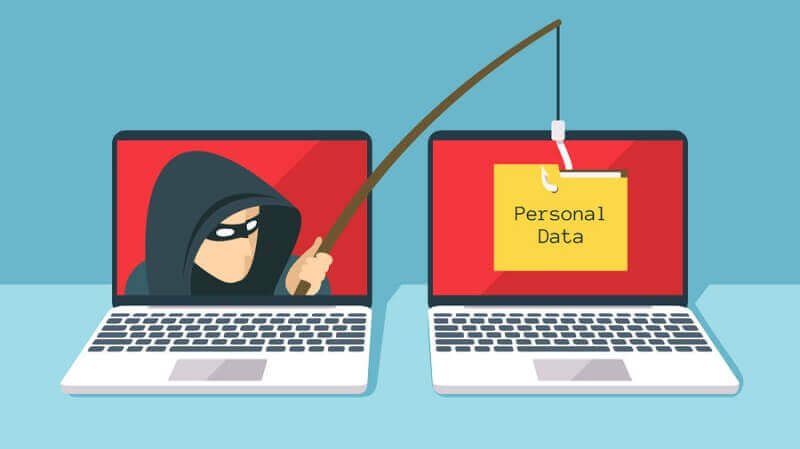Avoid scam and phishing emails with this simple tips.
Do you often getting these kinds of email messages, either telling “Your account is breached / compromised, please take action now by clicking this link or contact this number” or “You won something, claim the rewards by clicking the link or contact this number”? If yes, then you are not alone. Because not only you and myself, but thousands and even millions of people received similar emails each day.
When you received such email messages, telling your account is compromised, first of all, don’t panic or when you received email messages telling you won something, don’t be too happy to straight-away comply with what the email is telling you to do. Instead, use the following tips to ensure you are getting a valid email messages from valid senders. Only after you manage to confirm they are valid email address from valid sender, then you may take action on what the email told you to do.
- This article shared the simple tips you can do to spot and identify fake / scam / phishing email and what you can do to avoid them.
- In case you have queries, post them on the comment section below.
- For other interesting articles, head to: Life, Android, iOS, Games and Gaming, Tech, FREE Games and Stuffs and more on JILAXZONE.
- If you find this article / content inside is already obsolete, do let me know by commenting on the comment section below so that I can update the article to reflect the latest process/news. Thanks.
Here’s how to easily identify if email is a scam / phishing email
Step 1) Check the sender’s email address and not the sender’s email name.
I repeat, check the sender’s email address and not the sender’s email name. The sender’s name can be written as notification@facebook.com, but that doesn’t mean it’s actually sent from/by notification@facebook.com. Follow the steps to reveal the sender’s email address.
a) If the sender’s email address is hidden (some browser/app hide the sender’s email address), then click / tap on the sender name to reveal the sender’s email address.
b) Ensure the email domain is correct and valid. Email domain is anything after the @ sign.
A few examples:
Example 1: sender’s email address is notification@facebook.com, this means the email domain is Facebook.com.
Example 2: sender’s email address is no-reply@amazon.com, this means the email domain is Amazon.com.
Example 3: notification_from_facebook.com@xyz.com, this means the email domain is xyz.com and not facebook.com.
If the email domain is not correct, then you can simply ignore the email, because it’s a scam/phising email. Do NOT try to click/tap any links given within the email, because it may redirect you to a fake website that’s totally similar to the actual website. Best if you can do extra mile by report the email as spam email / phising email.
Step 2) Login directly to the service in question.
In case you are still worried that your account is actually compromised or breached, what you can do is to
a) Open the website / app in question. Ensure it’s the correct website with valid URL address or if it’s an app, ensure the app publisher is the valid app publisher.
b) Login using your credential.
Once logged in, see if you get notifications or alert if your account is breached / compromised. Check the inbox/notifications. If needed, do change your password.
Bring it all together
By doing the 2 steps above, now you should be in better position to identify whether email you receive is a legit valid email or just another scam email. Don’t fall prey to the scammers!
Additional tip: Turn off images on your email or change the setting to “ask before displaying external images”. By turning off/disabling images, you basically kill off the “email tracking pixel” method. The scammer has no way to know whether or not you have read their scam emails. Doing this (turning off images) is also a way to protect your email address from scammers, since they don’t know whether you have read their email, they would think your email address is a dormant email address or no-longer used email address. Google for “email tracking pixel” to know more.
Do you have anything you want me to cover on my next article? Write them down on the comment section down below.
Alternatively, find more interesting topics on JILAXZONE:
JILAXZONE – Jon’s Interesting Life & Amazing eXperience ZONE.
Hi, thanks for reading my curated article. Since you are here and if you find this article is good and helping you in anyway, help me to spread the words by sharing this article to your family, friends, acquaintances so the benefits do not just stop at you, they will also get the same goodness and benefit from it.
Or if you wish, you can also buy me a coffee:
Thank you!
Live to Share. Share to Live. This blog is my life-long term project, for me to share my experiences and knowledge to the world which hopefully can be fruitful to those who read them and in the end hoping to become my life-long (passive) income.
My apologies. If you see ads appearing on this site and getting annoyed or disturb by them. As much as I want to share everything for free, unfortunately the domain and hosting used to host all these articles are not free. That’s the reason I need the ads running to offset the cost. While I won’t force you to see the ads, but it will be great and helpful if you are willing to turn off the ad-blocker while seeing this site.

